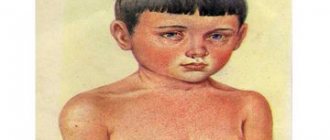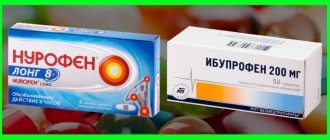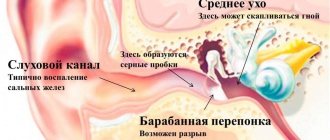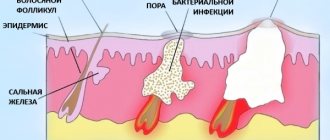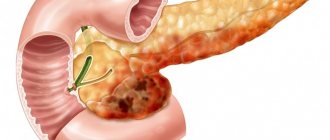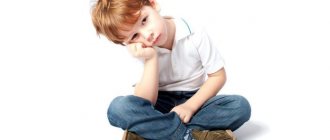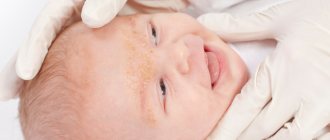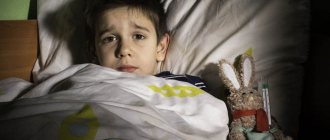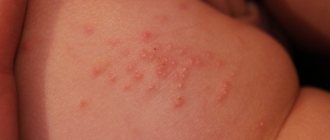Convulsions with fever in a child - Supermom
Rules for relieving seizures in children with fever Diagnosis of seizures in children Reasons for the social nature of the development of seizures in children Reasons for the development of seizures in children Types of seizures in children with fever
Any competent pediatrician knows how dangerous seizures are when a child has a fever. The appearance of muscle spasms in a baby can make parents nervous. This symptom manifests itself very painfully in children, complicating influenza, ARVI or respiratory diseases.
Under no circumstances should a dangerous syndrome be ignored - it may be a sign of a sluggish pathology, the danger of which is the development of juvenile epilepsy.
Let's look at febrile seizures in children, note their features, clinical manifestations, diagnostic methods and first aid rules.
What are the types of seizures in children?
What are cramps in children with fever - these are spontaneous muscle contractions that occur spontaneously. Typically, the symptom manifests itself as damage to one or more muscles, depending on the type of spasm.
Based on dysfunction in a child, there are two types of seizures:
- Tonic (from the word “tone”) is a kind of attack in which the muscle contracts for several seconds or minutes and only then relaxes. This type of spasm occurs in both infants and older children;
- Clonic are muscle convulsions in which there can be several contractions in one second. The muscle twitches strongly, as can be seen from the characteristic trembling of the limb.
Types of seizures in children with fever
Convulsions at a high temperature in a child can also be mixed - this is alternately tonic and clonic muscle contraction. Based on time, a distinction is made between simple convulsions, lasting less than 5 minutes, and prolonged ones - when the contraction time is much longer.
According to their prevalence, four types of seizures due to fever in children are classified:
- Focal – affect one muscle or its individual sections;
- Myoclonic – usually affects several muscles;
- Tonic-clonic – affects the limbs, characterized by alternating prolonged contractions and clonic jerks;
- Fragmentary - combined with signs of epilepsy, damage to the cerebral cortex and loss of consciousness.
Of all the groups, the greatest danger is represented by tonic-clonic and fragmentary convulsions, due to which there is a possibility of complications from the nervous system and internal organs.
Expert opinion!
The mechanism of development of seizures in a child is very complex and even today has more questions than answers.
Clinicians are sure of one thing - the baby’s body continues to develop even after birth, but its organs and systems are very fragile.
When influenced by reasons such as pregnancy disorders, birth injuries, damage during postnatal development can lead to irreversible consequences, convulsions of central or peripheral origin.
Etiology
The main causes of seizures in children with fever have not been fully determined, but scientists have identified trigger factors for their occurrence. This means that being a child in these risk groups increases the likelihood of developing the disease. They are as follows:
- Genetics - according to scientists, there is a hereditary predisposition to the development of seizures. If one of the parents has periodic muscle spasms, then the child’s likelihood of them increases significantly;
- Mom’s health – if during pregnancy a woman smoked and abused alcohol, poisoning of the fetus could occur with all the ensuing consequences;
- Age factor - according to statistics, seizures at fever most often develop before 5 years of age;
- Developmental disorders - if a child has mental retardation, cerebral palsy (cerebral palsy), congenital anomalies, this can become a trigger for the occurrence of muscle spasms at fever;
- Frequent illnesses over the past year - when a child has frequent viral diseases or ARVI with a rise in temperature, this contributes to disruptions in the functioning of the nervous system, leading to seizures;
Reasons for the development of seizures in children
- Fever – the trigger factor is the presence of temperature, which predisposes to the development of involuntary muscle contractions;
- Inflammation of the meninges – in the presence of meningitis, the risk of seizures increases sharply. With this pathology, the motor neurons of the cerebral cortex, which are responsible for muscle tone, are affected. Temperature is the trigger mechanism in this link of pathogenesis;
- Aggravated medical history - if the child has already been hospitalized in the past for seizures with fever or for any other conditions, the doctor should suspect a possible relapse and prescribe additional examination;
- Visiting a kindergarten or nursery - with multiple contacts with other children, the baby can become infected with various viral and bacterial infections, which can lead to systemic complications.
On a note!
These are the main predisposing factors for the occurrence of seizures in children. If your baby is at risk, this does not mean that he will have seizures at the first fever, but taking preventive measures will not harm the child.
The opinions of some doctors
Some clinicians attribute the appearance of seizures to a number of social reasons. In their opinion, the symptom is increasingly diagnosed in modern children, and this is explained by the following factors:
- Immaturity - modern babies are increasingly being born premature and weak, the number of births by cesarean section is growing every year;
- Features of evolution - in a primitive society, weakened children would die during childbirth or in the first months of life, without having time to leave offspring. Over the past decades, the level of medicine has increased noticeably; genetic defects have been inherited by the modern generation, whose babies “pay for their birth”;
- The danger of contracting an infection during fetal development - if a mother suffers one or more diseases during pregnancy, this can become a likely cause of serious complications in the fetus.
Despite the poor understanding of the causes, doctors have a large supply of possible hypotheses for the development of this disease, which are scientifically substantiated. Often, taking preventive measures based on knowledge of trigger factors helps avoid the occurrence of spastic contractions in children.
Reasons for the social nature of the development of seizures in children
How can parents identify seizures?
Every parent should know what cramps look like at a temperature - this will allow them to quickly navigate and provide first aid to their baby.
Characteristic signs of an attack are:
- An increase in muscle tone is usually noted in the affected area, but in a generalized form the whole body may spasm;
- The arms and legs begin to twitch - this indicates the occurrence of spasms in the flexors and extensors of the limbs;
- There may be a cessation of breathing for several seconds - determined by the movements of the chest and the negative reaction of the baby himself. The child may choke or cough;
- At the peak of the attack, urinary incontinence is noted - muscle pain provokes a violation of the innervation of the bladder;
- Facial expressions – the child’s jaws are closed, the eyes are widened, or vice versa – closed. This reaction is noted due to pain in the arms and legs.
The attack ends with slight twitching of the limbs, disturbance of the rhythm of breathing and heartbeat. It is difficult to distinguish between these stages, since a child, unlike an adult, is more emotional, and infants are completely frightened and continue to scream, fearing the appearance of a new spasm.
Important!
If signs of spasms continue for more than 15 minutes after the seizures have been identified, it is necessary to call an emergency medical team. The doctor will examine the baby and provide him with qualified medical care.
Diagnostics
Any parent can suspect cramps at a temperature, but to confirm them, an accurate examination is necessary. The main thing is to examine the patient, preferably at the time of the attack.
The diagnostic steps are as follows:
- An examination by the attending physician can identify muscle spasms. The doctor palpates (feels) problem areas, where he notes muscle density, duration and nature of contraction;
- Blood tests - a sample is taken from a finger and a vein to determine signs of inflammation and the presence of an infectious pathogen. If an increased erythrocyte sedimentation rate and a shift of the leukocyte formula to the left, the presence of microbes are detected, meningitis should be assumed;
- An electroencephalogram is a study of brain function to identify possible epilepsy;
- Cerebrospinal fluid examination is prescribed very rarely, only if meningitis is suspected. After collecting the cerebrospinal fluid, microbial cultures are carried out and the presence of a possible pathogen is studied.
All diagnostic methods are carried out according to a certain scheme - from simple to complex, the last study is prescribed only as a last resort due to the pain of this procedure. The next stage is assigned only if it is justified by objectivity.
Diagnosis of seizures in children
What are the dangers of seizures at fever?
When spasms occur, many parents begin to worry about the future health of their child. Due to the pronounced clinical picture, it should be assumed that seizures can cause serious harm to the baby’s body.
Unlike an adult, in young children the brain grows, and the nervous tissue is constantly renewed.
Therefore, with age, the likelihood of complications increases greatly - usually this is a violation of mental development and intellectual abilities.
If seizures with fever appear in the first 2 years, all doctor’s recommendations must be followed. If the symptom does not disappear over time, consultation with a neurologist is necessary.
Doctor Komarovsky about the problem
According to the doctor, if a child experiences seizures only when the temperature rises, there is no need to worry, since this is a common age-related phenomenon in some children. This condition is quite dangerous, so it is necessary to take antipyretics at the first appearance of fever.
On a note!
Dr. Komarovsky also recommends taking sedatives and calcium supplements, but it is better to coordinate therapy with your local pediatrician.
How to relieve cramps in children
What to do if a child has convulsions with a fever - parents can only provide first aid, and full treatment is carried out only in a hospital and under the supervision of a doctor. Do not carry out self-therapy under any circumstances - this can only harm the child’s health. If your child starts having seizures, it is recommended:
- Clear the space around the child by removing all objects that could lead to accidental injury;
- The baby must be in one place; it is forbidden to move him during a seizure;
- Do not try to restrain the baby's arms and legs;
- If asphyxia is suspected, turn the baby on his side so that he does not choke on saliva;
- It is prohibited to place a finger or foreign objects into the child’s mouth;
- After an attack, wrap your child in a wet towel to relieve fever.
It is recommended to call a doctor for examination and prescription of antipyretics.
Source: https://3rdom74.ru/zdorove/sudorogi-pri-temperature-u-rebenka.html
First aid for an attack
Convulsions are life-threatening as they can cause asphyxia and injury to the child. To avoid this, you must adhere to a clear algorithm of actions. What to do during an attack:
- If a child begins to have convulsions, you should immediately call an ambulance.
- Be sure to write down the time the attack began to provide information to doctors. You should remember all the features associated with the symptom. For example, the intensity with which muscle contractions occurred.
- The baby must be placed on its side on a hard surface. You should lightly hold the child by the body, but under no circumstances try to immobilize him. If movement is completely restricted, it can cause a bruise or sprain.
- You should secure the space where the child lies and remove objects that could inadvertently injure him.
- Ventilate the room well. It is also worth making sure that the clothes the child is wearing do not make it difficult for him to breathe.
- Stay with the child until the ambulance arrives. Even if the attack is over, it is possible that these may be recurring convulsions.
- Control your breathing. A child may stop breathing for a few seconds during a seizure. This condition may pass quickly, but if breathing does not return on its own, emergency resuscitation should be performed.
During muscle spasms, you should not put anything in your child’s mouth. The correct position of the child on his side will help to avoid tongue retraction. Any other actions can only injure the oral cavity and teeth. You should not try to give your baby something to drink or give him antipyretic medicine. Such actions are dangerous because they can cause respiratory arrest. With such symptoms, you can reduce the temperature only with the help of suppositories with paracetamol.
- temperature from 38 degrees and above;
- disruption of the central nervous system;
- underweight;
- hereditary predisposition.
Febrile convulsions in children with fever: how to recognize and what to do?
Convulsions in children due to high fever are a fairly common occurrence. Many parents at these moments are lost and don’t know: what is the right thing to do? Meanwhile, the main thing in such cases is to try to gather strength and help the child survive the attack. We will tell you what actions to take during seizures in our article.
The main causes of seizures in children with fever
Almost all viral infections occur in children, accompanied by high fever. Sometimes no means help bring it down, a fever begins, and convulsions occur against its background.
Doctors are not yet ready to answer : what is the root cause of this phenomenon . There is evidence that one of the factors is the child’s nervous structures that are not fully mature; they inhibit the central nervous system, which is why the condition in question arises.
Among the causes that provoke seizures are the following:
- Harmful effects on the fetus during pregnancy.
- Traumatic brain injuries.
- Intoxication of the body.
- Heat. Such seizures are called febrile. They can occur if a child is sick, teething, and even after a DPT vaccination.
- Hereditary predisposition.
Many parents think that seizures are a harbinger of such a serious disease as epilepsy. However, this is not always the case. According to statistics, only 2% of children who experience seizures subsequently acquire this diagnosis. Typically, cramps go away on their own in infants up to one year old.
But in children 5-6 years old, the presence of seizures can be a symptom of a serious disease of the nervous system: by this age it should become more stable. So for parents of such children, seizures are a reason to immediately contact an experienced neurologist.
What do cramps look like in a baby with a fever?
An attack of convulsions against a background of fever can be different, although the main symptom is a complete loss of connection with the outside world: children stop hearing, seeing, and reacting to the actions and words of mom and dad. The screaming stops, breathing slows, and the baby may even turn blue.
Other symptoms include:
- Teeth clenched.
- Breathing stops (apnea).
- Foam appears on the lips.
- Temporary memory loss occurs.
Treatment for seizures is prescribed only by a doctor, based on the general clinical picture of the course of the seizures.
Types of seizures in children with fever and their characteristics
Doctors distinguish several types of seizures, depending on the nature of external signs:
| Type of seizure | How it manifests itself | What should parents do? |
| Local |
|
|
| Tonic |
|
|
| Atonic |
|
|
The following examinations help determine exactly what type of seizures are:
- CT scan.
- General blood and urine analysis.
- Lumbar puncture, which excludes (or confirms) encephalitis or meningitis.
- Electroencephalogram EEG – excluding (or confirming) epilepsy.
What to do if a child has seizures with fever? First aid
Undoubtedly, cramps due to fever are not for the faint of heart. But panic in these cases is far from the best help. It is important to calm down and focus on providing first aid to a sick baby.
What actions to take first:
- Place the child on a flat, smooth surface . The child should lie sideways and his head should be pointed down. This measure is aimed at completely eliminating the risk of mucous secretions getting into the child’s respiratory tract.
- Listen to your breathing . As soon as it seems to you that the child has stopped breathing, perform artificial respiration.
- Provide a flow of fresh air into the room . The air temperature in the room should not exceed 21 degrees.
- Do not leave the child until the attack is over.
- Reduce the temperature in all possible ways : rubbing with water or vinegar, antipyretic suppositories, for example, “Cefekon” or “Panadol”. Remember that you cannot give medicine to a child during an attack: he may choke on it.
Do not under any circumstances try to open the child’s mouth, much less try to insert a foreign object into it. He might suffocate.
- Write down in detail the entire clinical picture - from the onset of the disease to the onset of seizures. Be sure to indicate all the details - how the attack occurred (with or without foam, the presence or absence of enuresis, respiratory arrest or trembling in the limbs) - then these data will need to be shown to the attending physician and the ambulance team.
Typically, convulsions accompanied by fever last from a few seconds to 15 minutes, after which the attack ends. But in any case, if a child has convulsions due to a fever, it is better to play it safe and immediately call an ambulance.
Emergency measures
If the seizures last more than 15 minutes, emergency doctors usually give the child intravenous injections with anticonvulsants. Usually these are drugs such as Phenytoin or valporic acid.
Remember, once an attack of convulsions has begun, it is impossible to stop it - you can only let it pass on its own. Convulsions should not be taken as a signal of distress: according to doctors, the condition in question along with a fever occurs in every 20th child. However, for most of them they pass without a trace and do not cause harm to health.
And if you constantly encounter this phenomenon, if your child is over 6 years old, but the seizures continue, it makes sense to undergo an examination by a neurologist to exclude the possibility of serious disorders in the functioning of the nervous system. Health to you and your children!
Share with your friends:
Source: https://baragozik.ru/zdorovyj-malysh/febrilnye-sudorogi-u-detej-pri-temperature-kak-raspoznat-i-chto-delat.html
The nature of convulsive muscle contractions
Convulsions are clear evidence that a pathological process is occurring in the child’s body. In order to take timely measures and help the newborn, you need to navigate the particular signs and symptoms of seizures of various natures. Febrile seizures in infants occur at high temperatures .
How can you differentiate them from symptoms of CNS injury or internal infection? And what should be the first aid? Convulsions in newborns indicate serious disturbances in the functioning of the central nervous system, metabolic processes, and may be a reaction to high temperature. This is due to the fact that the baby’s nervous system has not yet fully formed. In addition, the tendency to convulsive reactions is hereditary, in particular, it can manifest itself if one of the child’s relatives has epilepsy.
Types
Febrile seizures in a child can be of different types and locations
Based on the nature of their course, seizures are divided into several types. An attack accompanied by a high temperature may include a series of convulsive contractions of various types.
- Clonic . They are expressed through frequent (1-3 times per second) muscle twitching, in extreme forms they can lead to loss of consciousness.
- Tonic . Accompanied by long-term static contractions of the muscles of the whole body. They are easy to identify by their specific arched posture and thrown back head. Sometimes accompanied by apnea (short-term breath holding). The attacks last about a minute.
- Atonic . The opposite of a tonic state, when the muscles of the entire body simultaneously relax. This usually results in involuntary urination and loss of feces.
- Small . They appear as trembling muscles in the arms and legs, blinking, or bluish spots on the skin. Can last quite a long time.
Convulsions during fever in a child
Any deterioration in the health of their own child causes his parents to express concern. Especially when these changes are associated with fever and convulsions. Convulsions during fever in a child can occur at any age from six months to six years. The thermometer readings, as a rule, start at 38.5°C.
According to the observations of specialists, in approximately every fifth child of preschool age, an increase in body temperature to febrile levels (38-39 ° C) can be accompanied by a convulsive attack.
And, approximately, a third of children who first experienced such convulsions can react with them to an increase in temperature again. The convulsions that occur with it also received their names from the classification name of fever.
Therefore, they are often called “febrile”.
Causes of temperature cramps
The basis for the vast majority of pathological conditions in young children are two factors: heredity and immaturity.
In the first case, we are talking about a greater likelihood of developing febrile seizures in a baby whose parents and/or close (genetic) relatives faced the same problem in their childhood.
The risk also increases if the same family members have neurological diseases with seizures, such as epilepsy.
Morphological (structural) and functional immaturity of the organs and systems of a child of toddler and preschool age is the second and main reason for the development of febrile seizures.
The nervous system in young children does not yet have sufficient “insulation” (myelin sheaths on the nerves) and does not yet have all the “fuses” (inhibitory neurons in nerve regulation centers).
Therefore, the wave of excitement spreads easily and quickly.
Imperfect thermoregulation processes in children add their significant contribution.
The body at this age cannot quickly get rid of excess internal heat - the area of evaporating surfaces is too small: skin, lungs.
The sweat glands cannot secrete enough fluid, and they still don’t have all the fluid they have in adults. Therefore, it is much easier to overheat a small child than to overcool him.
Predisposing factors against which febrile convulsions develop include conditions and diseases accompanied by a sharp increase in body temperature. These include: overheating of the child (heat/sunstroke), teething, vaccination complications, all infections.
How to recognize febrile seizures?
- The child has an elevated body temperature - 38°C or more; extremely rarely they occur at the level of subfebrile values (37.0-37.9°C).
- Loss of consciousness - the baby falls on the spot, the crying/phrase is cut off, he does not respond to external influences, he may experience holding his breath and bluish skin.
- Convulsions appear.
Depending on the type of seizure, you can see:
- sharp tension of all muscle groups - legs are straightened, arms are bent and pressed to the chest, head thrown back, eyes rolled back; then the whole child begins to “shake”, the amplitude of the twitching gradually decreases and subsides - this is an attack of tonic convulsions;
- the muscles of only the arms or legs tense and then convulse - these are local spasms;
- there is a complete relaxation of all skeletal muscles (the child “goes limp”) and external sphincters (involuntary urination and defecation) - this is an atonic type of convulsions.
The duration of the entire attack, from loss to return of consciousness, does not exceed 15 minutes. But, it can be repeated and become a series. In this case, the “light” interval is noticeably reduced.
What to do if a child has a seizure?
The rules for providing first aid for febrile convulsions in children do not differ from those for convulsions of any other cause, or in adults.
- Stop panicking! Remember, only the cold-blooded performance of the necessary actions by nearby adults can prevent complications of seizures or even the death of the victim’s life!
- Prevention of injury and aspiration. As a rule, it is impossible to prevent injuries from falling from loss of consciousness, but limiting them in the event of immediate convulsions is easy. A clear, flat, hard surface (such as a floor) works best. After laying the child down, turn his head on his side (facing you), if this is not possible, turn the whole child on his side. This must be done to prevent saliva or (possibly vomit) from flowing into the child's airways.
- CALL AN AMBULANCE. Only now the child is relatively safe and you can be distracted by a phone call. If there are other people nearby, this item can be entrusted to them, in parallel with the previous one.
- Breath control. As a rule, breath holdings in a child during an attack are short-term and sporadic. If the baby stops breathing during the attack for more than half a minute, slightly change the position of his head, slightly turning it (or the entire baby on his side) in any direction. It is pointless to perform artificial respiration during an attack! It can only be carried out when muscle relaxation has begun.
- Physical cooling. Abruptly remove the cause of seizures – hyperthermia. Undress the child. If this is not possible, wet your clothes with cool water. Provide fresh air flow into the room. On the sides of the neck, where the carotid arteries pass, you can apply a cloth soaked in cold water.
- Do not overdo it! It is not recommended to stick your tongue out or insert any objects between your teeth. It is impossible to “swallow” the tongue; its retraction is eliminated by turning the head (point 4). A child can bite through fragile objects between the teeth, and fragments can get into the respiratory tract and/or injure the oral cavity and pharynx.
At the end of the attack, reassure the child and measure body temperature. If necessary, give an antipyretic, do not forget to mention this to the arriving ambulance doctors. Tell them about the nature of the attack: how it started, what happened to the child, what you did yourself.
Consult a neurologist as soon as possible. Single convulsions pass without any harm to health. But a series of them may indicate the onset of a disease accompanied by a convulsive syndrome.
Source: https://zdorovye-rebenka.ru/sudorogi-pri-temperature-u-rebenka
Possible consequences
Convulsions create conditions for oxygen starvation of nerve cells, and the more often they occur, the more serious the consequences can be. If left untreated, each subsequent attack will reduce the child's chances of normal intellectual development in the future. Therefore, for epilepsy that manifests itself in infancy, examination by a neurologist and subsequent treatment are very important.
Febrile seizures occur as a reaction to a significant increase in body temperature in young children. Children from infants to 6 years of age who have developed convulsive readiness are susceptible to this reaction.
Seizures associated with fever usually occur when the temperature is above 38 ºC. If febrile convulsions have occurred once, there is a high probability that they will happen again, so such children should lower their temperature, starting at 37.5 ºC.
Cramps in themselves cannot be considered a disease - it is the body’s reaction to a serious illness, a symptom characteristic of many diseases. Febrile seizures almost always go away without a trace with age. If convulsive seizures occur in a child under 1-1.5 years of age, then most likely they will not cause harm to the development of his nervous system. We are talking only about convulsions provoked by high temperature; spasms of other origins must be analyzed separately.
Febrile convulsions in a child with high temperature: symptoms, diagnosis, treatment, what to do
Childhood is often associated with diseases that cause an increase in body temperature. It is a defense mechanism in the fight against infections. However, in 4.2% of cases, a rapid increase in hyperthermia can lead to seizures.
Causes of febrile seizures and their manifestation in children
Seizures occur in children in the age range from 2-3 months to 6 years. Less commonly, the first attack can occur during the neonatal period (up to 28 days of life). They are manifested by muscle contraction of the tonic or tonic-clonic type. The provoking factor is a sharp increase in body temperature from 37 0 C to 40 0 C. This condition can be complicated by a transition to status epilepticus.
Etiological factors of seizures during hyperthermia
Infectious diseases (30-35% of cases):
- Diseases of the upper and lower respiratory tract of viral etiology (influenza A, metapneumovirus).
- Sore throat, pharyngitis.
- Herpes virus HHV-6, HHV-7.
- Intestinal infection in the acute period with intoxication (dysentery, salmonellosis).
Causes associated with functional disorders of organs and systems:
- Teething.
- Rickets.
- Hyperthermia due to endocrine pathology.
- Disorders of mineral metabolism (reduction of calcium, magnesium and phosphorus in the blood).
- Genetic predisposition.
- Individual reaction to the combined vaccine DTP (on the first day) and KKP (on days 8-15).
Types of seizures with fever
According to the type of seizures, they are distinguished:
Tonic convulsions:
Clonic seizures:
- focal;
- multifocal;
- generalized (bilateral).
According to the duration and nature of febrile seizures:
- Typical (96.9% of cases).
- Atypical (3.1% of cases).
The onset of simple seizures occurs between the ages of six months and five years, with an increase in incidence at 1-1.5 years. Paroxysms are distinguished by their generalized nature, tonic and tonic-clonic type. The duration of the attack does not exceed 15 minutes. It can be stopped without outside intervention.
There are no data on organic brain lesions (tumors, vascular diseases, intoxication, trauma). However, there is a high percentage of family history of febrile seizures.
Atypical seizures are characterized by early registration of the first episode.
The first paroxysm occurs at 2-3 months of life, with the likelihood of occurrence remaining up to 6 years. Duration from 15 minutes to several hours. The attack is generalized with lateralization and a focal component. Subsequent transformation into temporal lobe epilepsy is possible.
Children with complex seizures have had trauma or intrauterine brain damage. Family cases of febrile seizures and epilepsy were not identified during medical history.
Risk factors for developing seizures during fever in a child
Convulsions in children with fever are caused by the anatomical and physiological characteristics of the nervous system at the age of 0 to 6 years. During this period, the brain is in a state of increased excitability due to the immaturity of higher cortical inhibitory mechanisms. Therefore, hyperthermia can act as a trigger for the occurrence of seizures.
Risk factors for febrile seizures:
- Decreased immune status.
- Chronic respiratory diseases, urinary tract infections.
- Iron-deficiency anemia.
- History of allergies.
- Helminthic infestations.
- Perinatal factors (brain hypoxia, anomalies and malformations of the fetus, genetic determinism).
Symptoms
Clinically, convulsive syndrome at fever is represented by generalized seizures. The child suddenly loses consciousness. The skin becomes pale in color and the eyes roll upward. Teeth clenched tightly. Foam may appear at the mouth.
At the end of the attack, in 10-15% of cases, involuntary urination occurs, as well as retraction of the tongue due to a decrease in tone and relaxation of all muscle groups. Children feel general weakness, drowsiness or aggression.
Generalized seizures consist of the following components:
- Tonic convulsions are a combined tension of the facial muscles, body and limbs. The child suddenly tenses up, stretches his legs and bends his arms at the elbows. The head is thrown back, the jaws are clenched. Consciousness is preserved or lost.
- Clonic convulsions - muscles begin to alternately contract and relax rhythmically. The child makes flexion and extension movements of the limbs of various amplitudes.
- Tonic-clonic convulsions are a combination of the spastic phase with a vibrator component. They end with subsequent muscle relaxation.
Stages of convulsions:
- At the beginning of the attack, a phase of tonic spasm begins. The body is arched, the arms are brought towards the body, and the legs are extended or bent. After 10-20 seconds, the clonic phase joins. Rhythmic twitching of the limbs is added to the general tone, further affecting the muscles of the whole body.
- At this stage, due to spasm of the respiratory muscles, breathing disturbance, apnea, occurs. Clinically, this is manifested by a change in facial skin color and cyanosis of the nasolabial triangle.
- At the end of the spastic contraction phase, muscle relaxation occurs. The child regains consciousness. May be disoriented and sleepy.
Seizures are classified into a special group:
- myoclonic – lasts 1-2 seconds, manifests itself as sudden sharp shudders;
- partial (focal) – convulsions of individual parts of the body. The process involves the head (changes in facial expressions, turning the head and eyes in the direction of the lesion), limbs, and half of the body.
How to recognize febrile muscle contractions and distinguish them from others
Convulsions in children with fever occur at the onset of the disease, which provokes hyperthermia up to 38–40 °C. The reason for this is insufficient oxygen supply to the brain due to a sharp acceleration of metabolic processes. Repeated episodes may develop at lower temperature curves (up to 38 0 C).
Febrile seizures must be differentiated from diseases whose onset may have similar symptoms.
- Neuroinfections (meningitis, brain abscess, viral encephalitis). Lesions of the brain and its membranes, of infectious and viral origin, can begin with a convulsive syndrome. Most often, paroxysms occur 2-3 days from the onset of the disease. In 50% of children, in addition to seizures, positive meningeal symptoms, photophobia, profuse vomiting, severe headaches, and confusion are determined. In children under one year of age, bulging and pulsation of the fontanel is detected. The diagnosis can be confirmed by performing a spinal puncture with the collection of cerebrospinal fluid and a computed tomogram.
- Epileptic seizures that first appeared due to fever. The main symptom of epileptic paroxysms is stereotypy. All attacks that occur are similar to each other. Difficulty in differential diagnosis is presented by atypical forms of generalized seizures with focal neurological symptoms and a high probability of transition to temporal lobe epilepsy. Daily electroencephalography will allow you to distinguish between an epileptic seizure and convulsions during hyperthermia.
- Convulsions provoked by metabolic disorders (hypoglycemia, hypocalcemia, lipid metabolism disorders). Hypoglycemia (glucose level below 2.5 mmol/liter) occurs with pancreatic tumors and decreased pituitary function. May manifest as a convulsive syndrome simulating an epileptic seizure.
Source: https://promedikum.ru/artrit/febrilnye-sudorogi-u-rebenka-pri-vysokoj-temperature-simptomy-diagnostika-lechenie-chto-delat
Symptoms and diagnosis

The symptoms of seizures depend on the nature of muscle contraction. But in general we can talk about the following general features:
- Various tics and twitches;
- Uncontrolled movements of arms or legs;
- Distortion of facial features;
- Rolling eyes;
- Lockjaw;
- Pale skin and bluish tint to lips;
- Excessive salivation;
- Freezing in an unnatural position;
- Nausea and even vomiting.
The child may wet himself or faint. After an attack, he will most likely become capricious, but at the same time he will be sleepy and lethargic.
How to recognize epileptic seizures? During them, the baby falls to the floor and begins to convulse. His eyes roll back, foam appears on his lips, his jaw clenches. The child loses consciousness. The patient is able to wet himself or have involuntary bowel movements. Coming out of an attack is accompanied by disorientation and loss of memory of what happened. At the end of epileptic convulsions, the child experiences muscle relaxation and falls asleep.
Only a doctor can determine exactly why the seizures started. He decides which therapeutic course to choose.
But before this, the doctor collects anamnesis, analyzes how the seizure began, and prescribes tests. They usually include a blood test and electroencephalography. Sometimes computed tomography, pneumoencephalography, angiography, and spinal puncture are required.
Convulsions are dangerous because their consequences are unpredictable. During an attack, a child’s brain functions are weakened, and virtually no oxygen is supplied. Because of this, necrosis of brain cells begins, which leads to problems with the neuropsychic system and developmental delays.
General convulsive syndromes are the most serious, since the baby has absolutely no control over the body and is unconscious. During an uncontrolled seizure, epileptics run the risk of suffocating on saliva and vomit and biting off their tongue.
Why are night attacks dangerous? The baby finds himself alone with the disease, without the help of adults. This condition can even lead to death.
First aid
If a child experiences convulsions during fever, what should parents do first? Of course, it’s scary to see such a picture. However, you should not panic and try to restrain your baby during an attack. First of all, you should remove all dangerous objects away from the child to avoid damage. In addition, during an attack, saliva, food, vomit or any objects should not be allowed to enter the respiratory system.
If a child experiences convulsions during fever, first aid should consist of positioning the patient on a stable, flat surface. In this case, the baby’s body should be placed in a special position. The child should lie face down on his right side. This position will prevent foreign bodies from entering the respiratory tract.
Of course, a doctor should be called immediately if convulsions occur during a child’s fever. What to do before he arrives? Monitor the baby's condition. Parents should collect all the information necessary for the physician about the characteristics and duration of the attack. This will allow the specialist to assess the severity of the existing pathology and make the right decision aimed at eliminating it.
However, if the doctor has not come yet, and the child has a high temperature and convulsions, what should parents do? If adults who are next to a small patient feel that he is not breathing, then it is necessary to begin artificial respiration. All actions should be started only after the seizure ends. Parents should also undress the child as much as possible. It is important that the air temperature in the room does not exceed twenty degrees.

